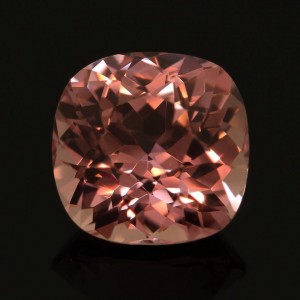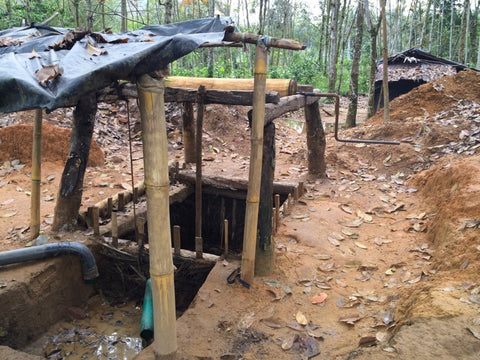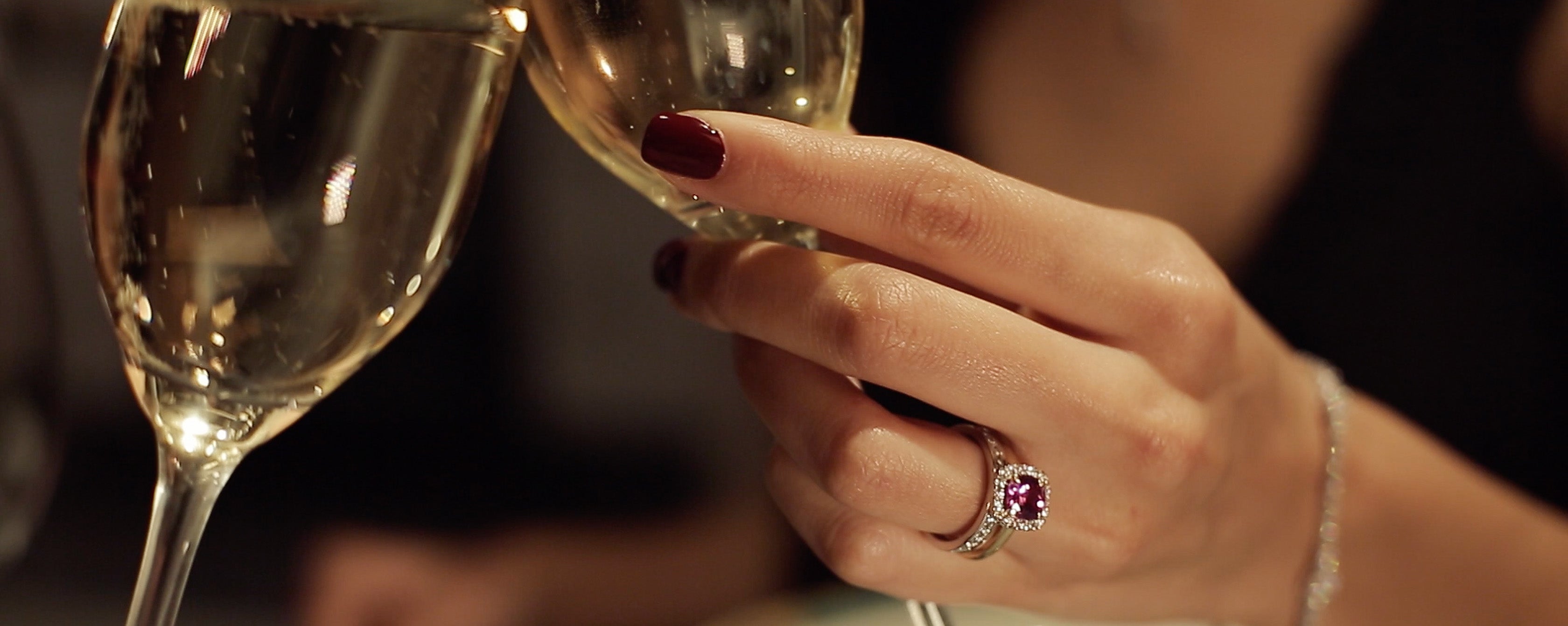Some time ago I traveled to Sri Lanka to look for the most beautiful and rare gemstones that this beautiful island has to offer. Below a small explanation of what makes Sri Lanka so special and of course a short report of my trip!

Throughout history, Sri Lanka has been known as the land of gems. Marco Polo described Sri Lanka (former Ceylon) in 1292: “I want you to understand that the island of 'Ceylon' is the most beautiful island in the world. From its rivers come rubies, sapphires, topazes, amethysts and garnets ”. Little has changed since then, except that there are a few more people walking around today. The gemstones come in large quantities, which is why Sri Lanka is also called “the Jewel Box of the Indian Ocean”. The island is one of a kind!
Sapphire
The Blue Sapphire is the king of all gemstones in Sri Lanka. Many well-known jewelery contains a blue sapphire from Sri Lanka. An example of this is the “Blue Belle”, which is a world famous blue sapphire of no less than 400 carats.

The most coveted color among the blue sapphires is "Royal Blue". As the name implies, the color is of royal status. It is deep blue, crystal clear, transparent and all at the same time. A well-known "Royal blue" sapphire is the 62-carat "Rockefeller Sapphire". Only one sapphire I was able to purchase in Sri Lanka is a perfect example of this color and is now available in my shop.

Many people think that sapphires are always blue, although blue is the most popular color, sapphires occur in many different colors in nature. From yellow to pink and from blue to red. Padparadscha sapphire is the rarest in this. The color can be described as light pink with orange tones. Padparadscha is Sinhalese for a lotus flower that has a salmon pink color and is therefore comparable to the color of this beautiful sapphire.
Heated or unheated?
Something that is not often talked about is the heating of sapphire. About 99 percent of the “beautiful” sapphires sold have been heat treated after they are found. Most sapphires naturally have a pale and light color.
Only a few people in the world are specialized in burning / heating sapphires. It is a technique where a faded sapphire goes into an oven with an unknown temperature for an unknown time. After the sapphire comes out of the kiln, the color is greatly improved. However, burning sapphire is not without risk, because there is a high chance that the sapphire will break due to the heat.

Incidentally, it is not the case that heated sapphires are bad or cheap. When a heated sapphire has the right color after the treatment, it can be very valuable.
My passion is finding “unheated” sapphires in the rarest colors possible. Colors that are normally only possible by means of heating. They are very rarely found in natural form by humans. It is impossible to express in words how rare this occurs ... The idea that humanity has (finally) had no influence on it and the sapphire is 100 percent made by nature makes this rare stone very valuable to many.
Is Sapphire Rare?
One can be brief about this question: Yes, especially if you compare it with a diamond. Sapphire is 10,000 times rarer than diamonds. There is still a lot of sapphire that could be found, but the government is holding back the large-scale extraction of sapphire to conserve nature, so that few permits are granted to open mines. This creates a lot of small local mining that are run by families. Because there is currently relatively little search for sapphire, the market value remains unclear and the value of sapphires is unfortunately not yet calculated for rarity. If that were the case, an unheated sapphire in a rare color would be worth a lot more than it is today. The value of a rare stone is therefore difficult to determine.
The mines
During my trip I was given the opportunity to view a mine inside. It gives a special feeling to climb into a small hole that is 6 to 12 meters deep. However, the mines are so well constructed that you feel quite safe there.


The ground in the mine is propped up with beams and bamboo sticks with banana leaves in between. The construction looks firmer than one would expect. During the excavation of the mine there are two pumps running continuously to drain the groundwater. Once the diggers get to the gravel layer where the sapphires are located, they start digging tunnels in the gravel. They collect the gravel that is released from this and are taken upstairs.


Next to the mine, a pond is created with the pumped groundwater, in which the miners start to wash out the gravel. After the soil has been rinsed away, the top layer is removed from the laundry basket. This is coarse rock that cannot be a gem.
The pure gravel that remains is then searched with extreme precision by hand for possible valuable crystals, which with a little luck can also be found.
Location of the mines
To find the most beautiful gems you have to be the first to see the stone. This is only possible if you are there when the stone comes out of the ground or if you own a mine yourself. The best mines are hidden in the middle of the jungle of Sri Lanka. My colleague has been coming there for many years and has built mines himself in various places. He also has trusted people who keep rare finds separate for him. Keep it separate is crucial, because only then can you win the rarest specimens.


Buying gemstones in the market
There are many gem markets in Sri Lanka. Traders and mine owners gather here to trade their new finds. Specialized gemstone traders come here weekly to fish the currants from the porridge.
Anyone who thinks they can buy gemstones cheaply during a spontaneous trip to Sri Lanka will be disappointed, literally and figuratively. The people of Sri Lanka are very helpful, pleasant and gentle, but it is a poor country and people want to earn something. Countless times, minerals are offered as sapphire. They are colored with ink and there is also a lie about the type of mineral they offer. They even import cheap Thai sapphire, which is then sold as a "rare" sapphire to tourists who visit a mine. I don't want to dissuade people with this as it is more than worth taking a look here out of interest, but pay attention to any purchase and don't be disappointed if what you are buying is not what you initially thought. In addition, you will certainly help people to purchase a lot of stones for a few euros. Don't forget to negotiate though!





